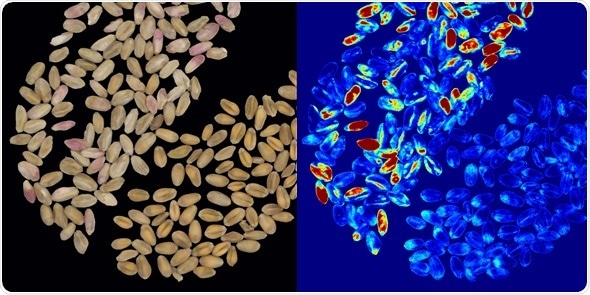The Videometerlab4 Multispectral Imaging System from Analytik now makes it possible to scan crop samples for Fusarium infection in under 10 seconds.

Multispectral analysis of wheat grain samples for Fusarium infection
The analytical methodology employed does not require traditional time-consuming sample preparation and eliminates the need for chemicals and costly consumables.
Fusarium is a fungal disease which commonly affects wheat, barley, oats, triticale and grasses as seeds, seedlings and adult plants. The range of symptoms caused by the Fusarium fungus is often referred to as 'ear blights'. Ear blights commonly cause yield loss, but most importantly can cause mycotoxin production in the grain. Mycotoxins are toxic to both humans and animals, therefore the limit on Fusarium presence in crops is enforced under EU law.
Saving both time and money, the VideometerLab 4 has been designed to be very easy to operate. Analyzing your crop sample for Fusarium infection can be achieved in 3 simple steps. Take a representative sample and place in a Petri dish, insert the Petri dish into the Videometerlab4 holder and activate measurement.
Using strobed LED technology - the VideometerLab 4 takes 19 images from UV (365 nm) to NIR (970 nm) making it possible to obtain a visualization of the Fusarium infection. In just 10 seconds the degree of Fusarium infection will be shown directly in a pseudo-color image – with orange/red areas indicating the degree of infection. This allows the percentage overall infection to be quantified and recorded for each sample.